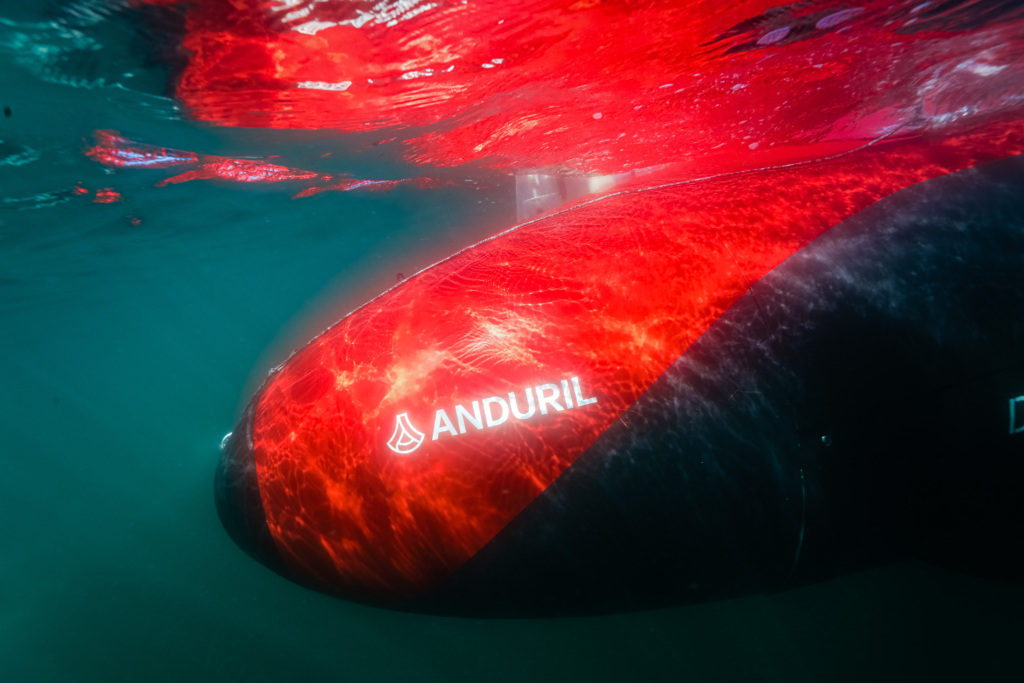Press Releases
Insights
Dive Technologies Q&A
NobleReach expands the adoption of new tech by helping start-ups scale—work that often entails bolstering the case for sales to government agencies and other companies. Dive Technologies is a great example.
Back in 2018, the Quincy, Massachusetts, company was founded to develop the Dive-LD—a large autonomous underwater vehicle (AUV) for defense and commercial customers. What some might call an “underwater drone,” Dive-LD makes it easier to conduct offshore and deep-water surveys and inspections and pursue intelligence, surveillance and reconnaissance (ISR) missions. We interviewed Sam Russo, Co-Founder of Dive and General Manager of Maritime, U.S., at Anduril and Matthew Matthew DePetro, Embedded Entrepreneur at Anduril, the defense contractor that acquired Dive in 2022.

First off, tell us about the challenges that Dive was designed to solve.
SAM RUSSO: Dive-LD is the most flexible AUV on the market, capable of carrying complex payloads or multi-sensor suites. It can be used for defense missions such as undersea ISR and mine countermeasures. We’re also working with customers to perform faster, lower cost, seabed surveys for offshore wind farms on both U.S. coasts, with less impact on the environment. And we’re working with owners of oil pipelines and telecom cables to inspect those assets. We believe this technology will ensure the safety of American electrical-, telecommunications-, and oil infrastructure.
What role did NobleReach play in this project?
MATTHEW DEPETRO: NobleReach identified me as a possible Embedded Entrepreneur, and I joined Dive Technologies in November 2022. I started off by evaluating the subcomponents of the Dive-LD AUV for commercial applicability, identifying competitive advantages, and exploring the commercial markets that we could apply the technology to, then I crafted and executed a go-to-market plan for the organization. One example: Based on my findings, the team focused more on the Robot as a Service (RaaS) model for the first few years, rather than prioritizing outright sales; NobleReach’s guidance was instrumental in our first three commercial contracts.
In much of NobleReach’s work with start-ups, there’s a promising technology and a clear problem, and a gap that needs to be closed. What were some of the gaps you were trying to close?
RUSSO: Our main challenge has been scaling the program and changing the status quo within the industry: Challenges in the maritime domain are usually solved with big vessels with big crews—but crewed vessels are very expensive, require a long time to build, and expose humans to inherently unsafe offshore environments. Anduril’s solution leverages uncrewed vessels and autonomy to solve critical needs and allow service members to focus on higher-level decision making. The challenge has been persuading “customers” using crewed vessels to accept some risk with a new approach while recognizing that the current approach to gathering data or performing subsea inspections is inadequate.
DEPETRO: Our biggest challenge has been building up a track record and body of work that we can share with our non-government customers. Breaking the status quo in any industry is challenging, so convincing one innovative organization to buy in on our solution has been the priority. To get there, we have performed missions with our own funding to prove out the performance of Dive-LD and to gather data to share with prospective customers.
What hurdles and surprises came up along the way?
RUSSO: We’ve been surprised most by the absolute tidal wave of demand for autonomous underwater vehicles. We’ve spoken with multiple offshore wind developers and many have expressed interest in Dive-LD. We’ve also seen interest from a few potential customers who want evidence of success in the field, but we’re not able to share the details of our defense work.
That hurdle led us to search more broadly, which led us to our initial customer—the National Offshore Wind Research and Development Consortium. NOWRDC, which evaluates and fosters new technologies for its members, has asked Anduril to perform automated inspections of offshore power cables in Rhode Island, a project that’s helping us build out a body of data to share with more potential clients.
Are there competitors in this space? What separates Dive from them?
DEPETRO: The immense size, capability, and manufacturability of the Dive-LD immediately jumped out at me as differentiators. For the first time, I could envision a robot, Dive-LD, doing what an expensive, manned surface vessel is doing today for commercial surveys. And as someone who’d come from another maritime robotics company, I was surprised at the speed with which such a large device could be manufactured—it’s truly a game changer.
RUSSO: With Matt’s guidance, we produced a competitive assessment of the world of subsea data collection and monitoring, a rapidly evolving space. Many players are trying to solve the problem from the top down: They’re using innovative uncrewed surface vessels that sit on the ocean’s surface and look down, whereas Dive-LD allows us to work closer to the seafloor, providing some unique advantages. Dive-LD is also offered as a service, meaning we collect the data, and customers benefit from having a talented, humble, and very responsive team carry out the mission and deliver them the desired data set. We’re able to implement novel technology advances and new solutions in days rather than months or years.
What’s next?
RUSSO: Growth and expansion. Our goal with Dive-LD has always been to provide an AUV platform at scale. That means driving more usage in our existing core commercial markets within the United States, including offshore wind, oil and gas, and telecommunications. It also means leveraging Anduril’s global footprint to expand Dive-LD use with key partners and allies of the United States.
More Recent News & Insights
Press Releases
NSF and NobleReach Emerge select 11 projects to speed biotechnology development and translation
U.S. National Science Foundation